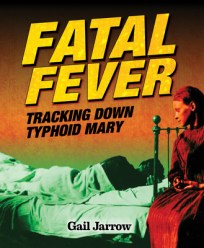
STEM TUESDAY: Let’s Explore Botany – In the Classroom
Note to all: This STEM Tuesday In the Classroom, we welcome Jodi Wheeler-Toppen as our newest blogger. As her “In the Classroom” collaborator, I think you’ll just love what Jodi has to offer. Author of STEM books for kids and educational books for teachers, this dynamo has lots to share. Welcome, Jodi!
–Carolyn DeCristofano
Botanical Bellringers
I took a botany course in college. I planned to get it out of the way so I could move on to the more interesting parts of getting a biology major. Instead, I had an excellent professor who threw open the treasure chest of plant knowledge for me (and, incidentally, got me started on science writing). A maxim among children’s writers is “plant books don’t sell.” I want to change this to “Plant books don’t sell themselves.” With the right introduction, kids can be drawn into reading a book with cover-full of plants.
The books on this month’s list aren’t as likely to be used as a whole-class read, so I propose having them in the classroom library and using bellringers (warm-up questions/ do-nows/ or whatever you like to call the questions that teachers have students do as they enter the classroom) to engage students in the topics. After the bellringer, you can show students the book and encourage them to take a look at it later.

Display plants 1-5 on page 66. Ask: Make a prediction. How might plants 1 and 2 be related? How about plants 3, 4, and 5?
When you are ready to discuss the bellringer, display the first two paragraphs of text on the page, which describe the wild plant that was domesticated to become corn and the two plants that were crossed to create the wheat we eat today.
 It’s a Fungus Among Us: Students will pick this one up because of the engaging photographs. It also has “test it out” experiments. I particularly liked one on p. 15 that gave students ideas for gathering data on whether lichen could serve as a compass. This bellringer works on visual literacy and plant/ fungi interactions.
It’s a Fungus Among Us: Students will pick this one up because of the engaging photographs. It also has “test it out” experiments. I particularly liked one on p. 15 that gave students ideas for gathering data on whether lichen could serve as a compass. This bellringer works on visual literacy and plant/ fungi interactions.
Display the text and diagram for “Plant Partners” on p. 26. Ask: This diagram and text work together to give you information. What do you learn from the words that you don’t get from the picture? What information is in the picture that you don’t get from the words?
When you are ready to discuss, point out to students that pictures and text often have different information, and it is valuable in science to spend time with each. Never just skip over the diagrams! (Students often ignore diagrams and charts in their science books, and visual literacy is as important as text literacy in academic reading.)

Display the images. Ask: Try to identify each of these vegetables. Have you ever eaten anything similar?
When you are ready to discuss, talk about the value of heritage seeds. It’s not just fun to have different foods to eat, but it also helps us have a variety of genes to help breed plants for new environmental challenges. Encourage them to read The Story of Seeds to find out more.

Display this photo. (It is also in the book.) Ask: Would you like to have a tree this big in the school yard? Why or why not? Where do you think this tree lives?
When you are ready to discuss, explain that the picture is of the American Chestnut. Ask students for their guesses of where it lives. Tell them you have a map of the range of the Chestnut tree and display the map on p. 16 (A similar map can be found here.) Have them find where you live on the map and imagine that 100 years ago, they could have gone outside and seen one of these trees. Point them to the book to find out about the disease that killed this tree, where survivors still exist, and the hunt for a way to bring the American chestnut back.

Display the “Tox Box” for Lead (p. 23), Radium (p. 126), Mercury (p. 15), or Arsenic (p. 13). Ask: Before the scientists could use chemistry to figure out if someone had been poisoned, people were often thought to have died of disease instead of poison. Read this description and propose some diseases or conditions that people might have gotten confused with this poison.
When you are ready to discuss, don’t tell them if they are right or wrong. Insist that they read the book to find out! And next time students ask when they are “ever going to use this stuff,” remind them that the ability to use chemistry to detect poisons is the reason that poisoning has fallen out of favor!
Do you have other bellringers you like to use when teaching plants? Tell us about them in the comments!
 Jodi Wheeler-Toppen is a former science teacher and the author of the Once Upon A Science Book series (NSTA Press) on integrating science and reading instruction. She also writes for children, with her most recent book being Dog Science Unleashed: Fun Activities to do with Your Canine Companion. She loves plants but seems to have a brown thumb.
Jodi Wheeler-Toppen is a former science teacher and the author of the Once Upon A Science Book series (NSTA Press) on integrating science and reading instruction. She also writes for children, with her most recent book being Dog Science Unleashed: Fun Activities to do with Your Canine Companion. She loves plants but seems to have a brown thumb.




 Your host this week is
Your host this week is 


